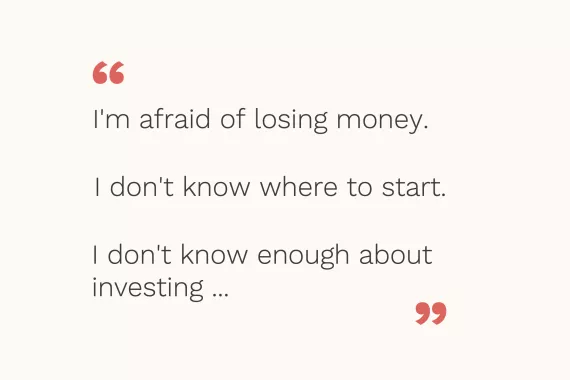Let’s keep it simple, low risk doesn’t mean low ambition
If you’re living in Switzerland and want to grow your money without taking big risks, you’re not alone. Whether you're saving for retirement, a home, or just want to protect your hard-earned Swiss francs from inflation, building a low-risk investment portfolio is a smart, steady approach.
The good news? You don’t need to be a finance expert. With a bit of planning and the right tools, anyone can build a portfolio that suits their comfort with risk and helps their money grow gradually over time.
This guide will walk you through the basics of how to build a low-risk investment portfolio in Switzerland, one that’s built for stability, not stress.

What is a low-risk investment portfolio, exactly?
A low-risk portfolio focuses on protecting your money while offering modest, steady returns. Unlike high-risk investing, where the goal is to maximise gains (often with more volatility), low-risk investing prioritises and peace of mind.
These types of portfolios typically include safer, more stable asset classes like high-quality bonds, savings products, and sometimes low-volatility equity funds. You may not get eye-popping returnsб but your investments are less likely to keep you up at night.
Why invest in Switzerland with a low-risk strategy?
Switzerland is known for financial stability, a strong currency, and excellent banking infrastructure. But even in this low-inflation, low-interest world, parking all your money in a savings account may not be the best move.
Interest rates in Swiss bank accounts are often too low to beat inflation. That means your money could lose value over time, even if the balance doesn’t drop.
By building a diversified, low-risk investment portfolio, you can keep your money working without taking on unnecessary exposure to volatile markets.

What could go into a low-risk portfolio in Switzerland?
Let’s explore the common building blocks:
Swiss bonds and bond funds
Government or high-grade corporate bonds are a favourite among cautious investors. Swiss government bonds are known for their reliability, while some corporate bonds offer slightly better returns with limited extra risk. Bond funds help spread your investment across multiple issuers, which reduces the impact if one underperforms.
Cash and savings products
Cash and term deposits (also called time deposits or fixed-term accounts) remain useful for liquidity and security. These provide a place to park emergency funds or money you might need soon. While the returns are small, they’re predictable.
Pension-linked investing (Pillar 3a)
In Switzerland, Pillar 3a accounts allow you to invest your retirement savings in a tax-efficient way. Many banks and fintech platforms now offer 3a investment solutions with low-risk options, including mixes that focus heavily on bonds and cash equivalents.
Low-volatility or dividend equity funds
Some equity funds are built with risk-averse investors in mind. These might focus on companies with stable earnings and strong dividend records. Although they carry more risk than bonds or cash, they’re far less volatile than broader stock market funds.
Gold or defensive ETFs
While not essential for everyone, some investors choose to include small allocations to gold or defensive sector ETFs. These can act as a hedge during uncertain times but should be used cautiously in a low-risk portfolio.

Avoid putting everything in one place
Even within a low-risk strategy, diversification still matters. Spreading your money across several types of investments, within Switzerland and globally, can protect you if one area underperforms.
Make sure you understand the fees and structure of any funds you invest in. Some Swiss platforms charge higher fees than others, and these can eat into your returns over time.
Tools to help you build a low-risk investment portfolio in Switzerland
Many banks and online platforms now offer automated tools or managed portfolios tailored to different risk levels. In Switzerland, services like VIAC, Frankly, True Wealth, and Selma Finance offer modern, app-based investing with low-cost options.
These platforms usually ask a few questions about your goals, age, and risk tolerance, then suggest a portfolio mix that suits you. If you select a conservative or low-risk setting, the app will typically build a portfolio focused on bonds, cash-like assets, and lower-risk funds.

How to manage your low-risk portfolio over time
Once your portfolio is set up, the key is consistency. You don’t need to watch it daily, but a quick review once or twice a year is a good habit.
Make sure your asset mix still reflects your goals. If life changes a new job, buying property, starting a family it might be time to adjust.
Avoid reacting emotionally to market news. Remember, your portfolio is built to grow slowly and steadily. That’s the point.
Final thoughts on low-risk investing in Switzerland
Choosing a low-risk investment portfolio is not about playing it safe out of fear. It’s about building a smart, thoughtful strategy that matches your lifestyle, your personality, and your financial goals.
Switzerland offers plenty of opportunities to invest with confidence even if you're cautious by nature. With a well-balanced portfolio and the right support, you can grow your money steadily, avoid unnecessary stress, and feel in control of your financial future.

Start investing with clarity and confidence
Download our free app to build your personalised low-risk investment portfolio designed with Swiss investors in mind.
Get expert-built portfolios, automatic rebalancing, low fees, and step-by-step guidance that makes investing feel less overwhelming.
👉 Download the app now and start growing your money, your way
Because smart investing isn’t about taking wild chances. It’s about steady, simple progress starting today.
-
Why you don't need to be afraid of investing.
Our 15 minute webinar is aimed at encouraging more women to take the plunge – but really, the facts apply to anyone who might be t...
